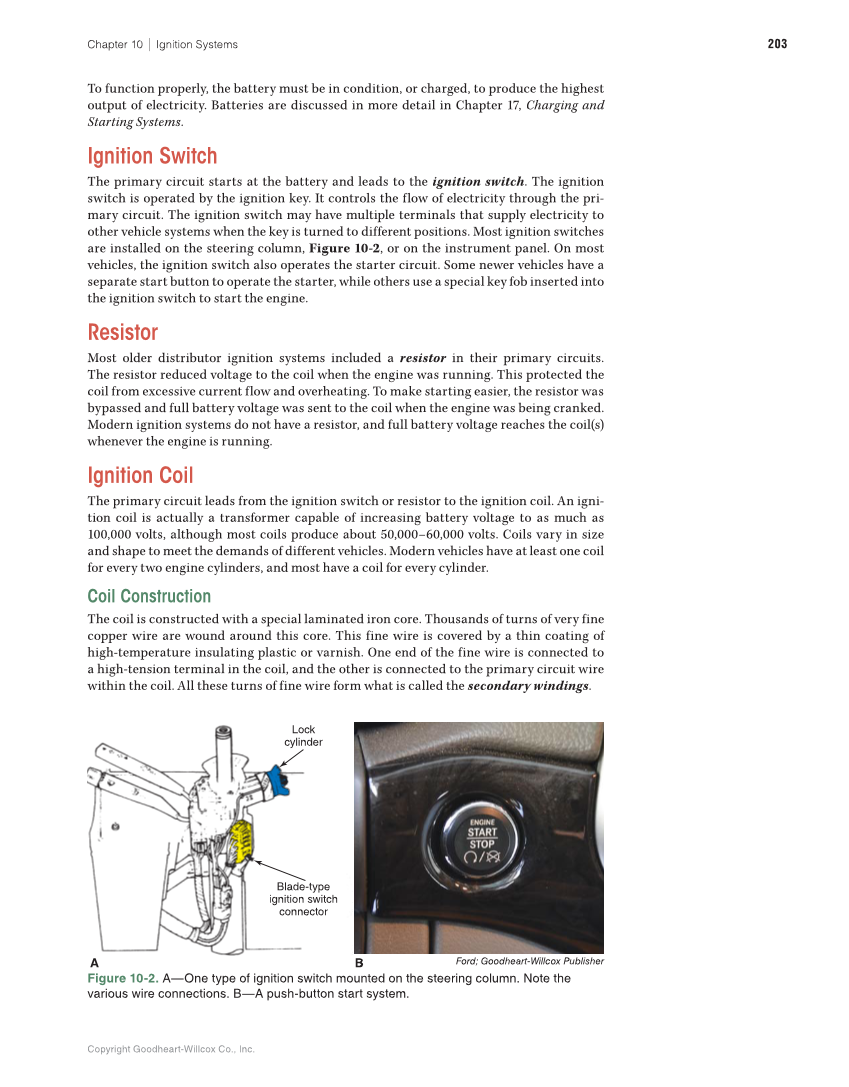Copyright Goodheart-Willcox Co., Inc. Chapter 10 ∣ Ignition Systems 203 To function properly, the battery must be in condition, or charged, to produce the highest output of electricity. Batteries are discussed in more detail in Chapter 17, Charging and Starting Systems. Ignition Switch The primary circuit starts at the battery and leads to the ignition switch. The ignition switch is operated by the ignition key. It controls the flow of electricity through the pri- mary circuit. The ignition switch may have multiple terminals that supply electricity to other vehicle systems when the key is turned to different positions. Most ignition switches are installed on the steering column, Figure 10-2, or on the instrument panel. On most vehicles, the ignition switch also operates the starter circuit. Some newer vehicles have a separate start button to operate the starter, while others use a special key fob inserted into the ignition switch to start the engine. Resistor Most older distributor ignition systems included a resistor in their primary circuits. The resistor reduced voltage to the coil when the engine was running. This protected the coil from excessive current flow and overheating. To make starting easier, the resistor was bypassed and full battery voltage was sent to the coil when the engine was being cranked. Modern ignition systems do not have a resistor, and full battery voltage reaches the coil(s) whenever the engine is running. Ignition Coil The primary circuit leads from the ignition switch or resistor to the ignition coil. An igni- tion coil is actually a transformer capable of increasing battery voltage to as much as 100,000 volts, although most coils produce about 50,000–60,000 volts. Coils vary in size and shape to meet the demands of different vehicles. Modern vehicles have at least one coil for every two engine cylinders, and most have a coil for every cylinder. Coil Construction The coil is constructed with a special laminated iron core. Thousands of turns of very fine copper wire are wound around this core. This fine wire is covered by a thin coating of high-temperature insulating plastic or varnish. One end of the fine wire is connected to a high-tension terminal in the coil, and the other is connected to the primary circuit wire within the coil. All these turns of fine wire form what is called the secondary windings. Blade-type ignition switch connector Lock cylinder A B Ford Goodheart-Willcox Publisher Figure 10-2. A—One type of ignition switch mounted on the steering column. Note the various wire connections. B—A push-button start system.
